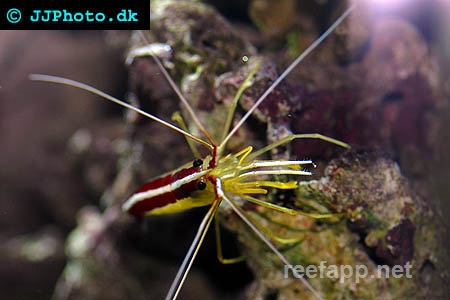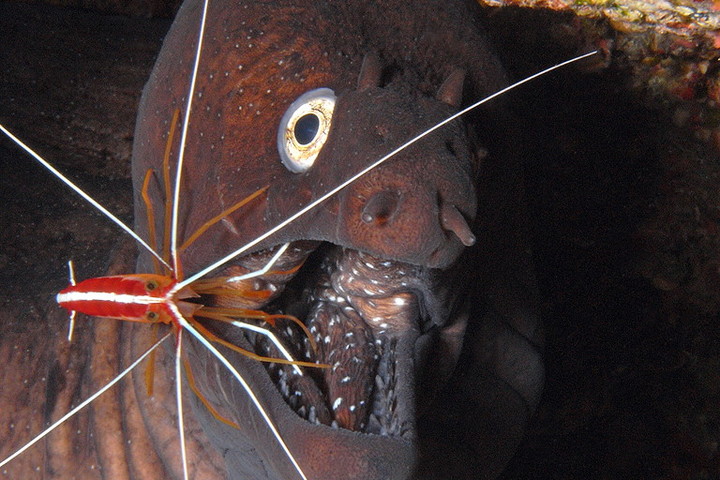Lysmata grabhami


| Latin name | Lysmata grabhami |
|---|---|
| Local name | Caribbean cleaner shrimp |
| Family | Alpheoidea - Lysmata |
| Origin | The Mexican Golf, West Atlantic |
| Max length | 5 cm (2") |
| Minimum volume |
50 l (13 gal) |
|---|---|
| Hardiness |
Average |
| Suitable for aquarium |
Suitable for most aquarium |
| Reef safe |
Always reef safe |
| Aggressiveness | Peaceful |
| Recommended |
Small crustaceans (Krill, mysis, artemia...) |
|---|---|
| Mostly |
Detritus Parasites |
This species is very sensitive during transportation and acclimatizing into the aquarium.
These shrimps will sometimes irritate corals by taking food out of their mouths, but this is not generally a problem.
This species can be bred in captivity, one can therefore consider asking your local fish store for a captive bred specimen.
This species is able to remove parasites from fish.
It does not have a great impact on a large outbreak of marine ich (Cryptocaryon), for example, but it contributes towards keeping fish parasite free.
Constant cleaning can stress the fish in the aquarium, so one should not add this fish which removes parasites, if the fish are already weakened through other causes.
Not all specimens actively clean fish.
Grabhami can be distinguished from Lysmata amboinensis by the solid white stripe on the back which runs from the head to the end of the tail. Grabhami has stripes along each outer edge of the tail while Amboinensis has two white dots.
Shrimps have many different purposes in the tank, some are just pretty while others are shy but useful. Some remove parasites whilst others help fight different pests.
Read more about the different genera and species for more specific information.
Ronald L. Shimek. 2004. Marine Invertebrates (PocketExpert Guide) - TFH Publications / Microcosm Ltd. - (English)
Bob Fenner. Cleaner Shrimps of the Family Hippolytidae - Wet Web Media - (English)
James W. Fatherree. A Few Common Shrimps for the Marine Aquarium - Wet Web Media - (English)

